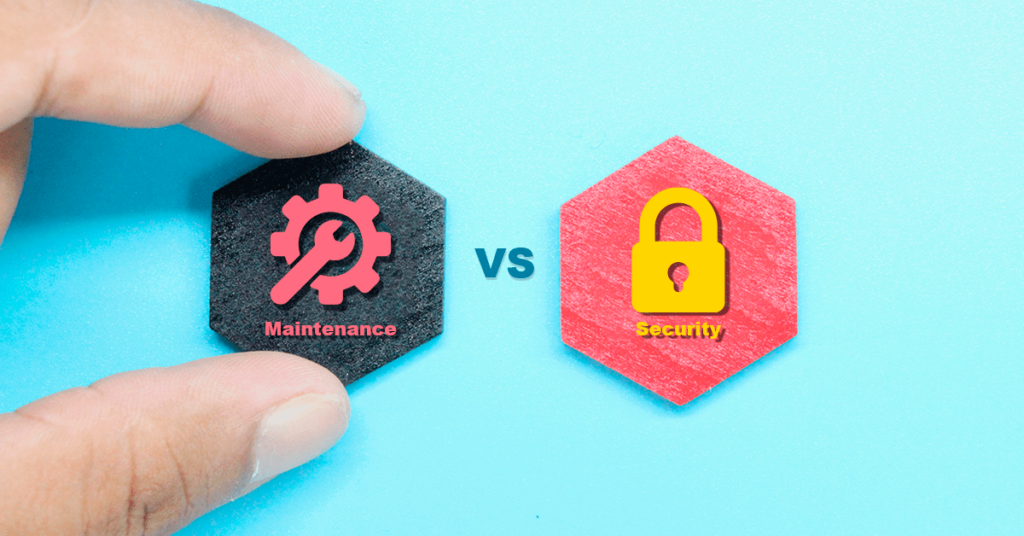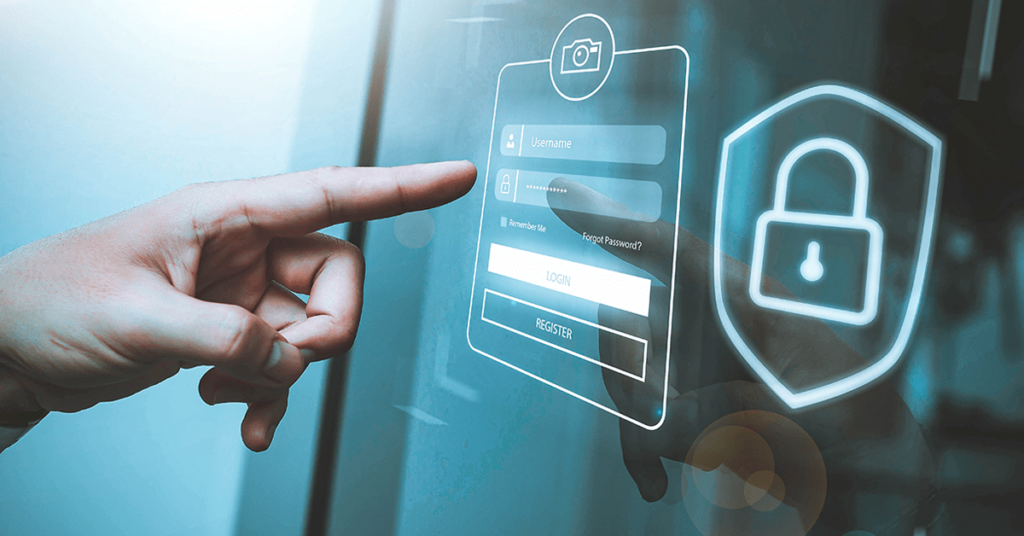
Understanding the Basics: Website Security and Maintenance
In today’s digital landscape, website security plays a critical role in safeguarding sensitive data and protecting against a myriad of cyber threats. It encompasses a range of measures designed to ensure the confidentiality, integrity, and availability of information on a website. Similarly, website maintenance is essential for the ongoing functionality and performance optimization of a website. Additionally, web security maintenance is crucial for protecting sensitive information and complying with data protection regulations.
What is Website Security?
Website security refers to the implementation of strategies and technologies to protect data from unauthorised access, use, disclosure, disruption, modification, or destruction. The importance of protecting data cannot be overstated as it directly impacts the trust and confidence users have in a website. With the cost of cybercrime predicted to reach $8 trillion by 2024 and grow to $10.5 trillion by 2025, it’s evident that robust security measures are imperative to mitigate potential risks.
Common threats to websites include cyber attacks such as malware injections, phishing attempts, DDoS attacks, and SQL injection attacks that corrupt databases with a malicious software code. These threats can lead to severe consequences such as data breaches, financial losses, damage to reputation, and legal implications.
The Essentials of Website Maintenance
On the other hand, website maintenance involves regular updates and backups to ensure that the site remains functional and secure. Regular updates are crucial for patching vulnerabilities and addressing software bugs that could be exploited by malicious actors. Additionally, monitoring website performance is vital for identifying any anomalies or issues that may affect user experience.
According to survey findings from website professionals globally:
59% reported using at least 5 different platforms to gather intelligence about their website’s health and performance.
48.57% said that their sites’ technical SEO was in need of improvement.
These statistics highlight the complexity involved in maintaining an optimal website environment amidst evolving technological landscapes.
By understanding these fundamental aspects of website security and maintenance, individuals can better appreciate the significance of proactive measures in mitigating potential risks while ensuring seamless user experiences.

The Current State of Website Security
In the rapidly evolving digital landscape, a website’s database security faces a multitude of emerging threats and vulnerabilities that demand proactive measures to safeguard sensitive information. Recent news reports on major website security breaches illustrate the escalating concerns over cyber attacks and the imperative need for robust security practices.
Emerging Threats and Vulnerabilities
Brute Force Attacks on the Rise
Recent years have witnessed a significant surge in cyber attacks, particularly in the APAC region, which has become a prime target due to its growing digital economy. One common method used by hackers is brute force attacks, where they exploit vulnerabilities by guessing passwords to gain unauthorized access. As technology continues to advance at unprecedented rates, new cyber threats are constantly emerging, posing substantial risks to websites and online platforms. Ransomware attacks, in particular, have seen exponential growth both in numbers and their detrimental impact on businesses and organisations. The financial and reputational costs associated with ransomware attacks underscore the critical importance of implementing stringent security measures.
The Impact of Neglecting Security
Negligence towards website security can lead to severe consequences for businesses and users alike. With 75% of respondents reporting a significant increase in security incidents, it is evident that weak security measures make it easier for hackers to gain access to websites through techniques like brute force attacks. These incidents not only compromise sensitive financial data, but also erode user trust and confidence in online platforms.
Best Practices in Website Security
Secure Coding Techniques
Implementing secure coding techniques is paramount in fortifying website defences against potential vulnerabilities. By adhering to best practices such as input validation, output encoding, proper error handling, and secure session management, developers can mitigate the risk of common attack vectors like cross-site scripting (XSS) and SQL injection.
Additionally, protecting login credentials through secure coding techniques and SSL encryption is essential to prevent interception by hackers and enhance overall website security and user trust.
Implementing Strong Access Controls
Robust access controls play a pivotal role in restricting unauthorised access to sensitive data. By strong passwords, enforcing principles of least privilege and implementing multi-factor authentication mechanisms, websites can bolster their defences against unauthorised intrusions. Additionally, a Web Application Firewall (WAF) is crucial in defending against malicious traffic by analyzing incoming requests and blocking harmful activities.
As cybercrime continues to grow exponentially, integrating advanced cybersecurity measures becomes increasingly indispensable. The rise of AI-enabled hacking mechanisms further underscores the urgency of adopting proactive security-by-design approaches from the outset of website development processes.

The Role of Website Design in Security
In the realm of website security, website design plays a pivotal role in fortifying digital defences and ensuring the protection of sensitive data. By integrating robust design principles, websites can enhance their security posture and mitigate potential vulnerabilities.
Design Principles for Enhanced Security
User Authentication Processes
Effective user authentication processes are fundamental to safeguarding website integrity. Implementing multi-factor authentication (MFA) mechanisms, biometric recognition, and adaptive authentication techniques can significantly bolster user identity verification. For instance, the case study of HillQuest Security website design demonstrates the seamless integration of MFA protocols to ensure secure access to sensitive information on a secure website.
Data Encryption Methods
Data encryption serves as a cornerstone in preserving data confidentiality and thwarting unauthorised access to data transmitted. By employing advanced encryption algorithms such as AES-256 and RSA, websites can secure data both at rest and in transit. The case study of ABC Healthcare underscores the significance of robust encryption methods in safeguarding patient records and sensitive medical information from potential breaches.
The Impact of Poor Design on Security
Common Design Flaws and Their Consequences
Poorly designed websites often exhibit common flaws that expose them to security risks. Inadequate input validation, improper error handling, and weak session management are among the prevalent design flaws that can be exploited by malicious actors. These flaws not only compromise data integrity but also undermine user trust and confidence in the website’s security measures.
To protect websites from malicious traffic, it is crucial to utilize tools like Web Application Firewalls (WAFs) that analyze incoming website traffic and block harmful requests.
Case Studies: Design Failures Leading to Breaches
The Security Superheroes Case Studies provide compelling insights into real-world scenarios where design failures led to significant breaches. For instance, a fictitious company called ABC Healthcare encountered a serious security breach due to inadequate input validation, leading to unauthorised access to patient records. This case underscores the critical impact of poor design on overall website security.
By adhering to sound design principles and learning from real-world case studies, websites can proactively address potential vulnerabilities while fostering a secure online environment for users.

Keeping Up: Website Maintenance Essentials
In the realm of website management, website maintenance stands as a pivotal aspect in ensuring the ongoing functionality and security of online platforms. As websites continue to serve as primary touchpoints for businesses and organisations, the significance of regular maintenance tasks cannot be overstated. By adhering to a comprehensive maintenance regimen, website owners can proactively address potential vulnerabilities and enhance user experiences.
Routine Maintenance Tasks
Software Updates and Patch Management
Regular updates to a website’s software are fundamental components of effective website maintenance, ensuring security and optimal functionality. By staying abreast of the latest software releases and security patches, website administrators can mitigate the risk of exploitation due to known vulnerabilities in outdated software. As highlighted by industry expert WDD, automating these repetitive tasks not only saves time but also enhances revenue potential by enabling professionals to handle more clients and complex projects efficiently.
Regular Security Audits
Conducting regular security audits is imperative in maintaining a website’s security through regular updates and responsible plugin selection, as well as identifying potential weaknesses within a website’s infrastructure. These audits encompass comprehensive assessments of existing security measures, vulnerability scans, and penetration testing to evaluate the resilience of a website’s admin panel against potential threats. By integrating automated tools for security audits, businesses can streamline this critical aspect of maintenance while bolstering their overall security posture.
The Role of Analytics in Maintenance
Using Data to Identify Issues
Leveraging analytics data plays a crucial role in identifying underlying issues that may impact website performance and security. By analysing metrics related to user engagement, traffic patterns, and error logs, website administrators can pinpoint areas requiring attention or optimization. This proactive approach enables businesses to address potential issues before they escalate into significant concerns.
Enhancing User Experience Through Maintenance
Website maintenance directly influences user experience by ensuring seamless functionality and optimal performance. Insights from Lumar’s survey underscored that technical SEO was identified as an area in need of improvement by nearly half (48.57%) of respondents. This highlights the integral role that maintenance plays in enhancing not only security but also overall user experience through improved technical aspects such as SEO optimization. Secure websites are favored by search engines, leading to improved search engine rankings and increased traffic.
By embracing routine maintenance tasks and leveraging data-driven insights, businesses can fortify their websites against potential threats while delivering enhanced user experiences.

Future Trends in Website Security
As technology continues to advance at an unprecedented rate, the future of Website Security is poised to undergo significant transformations driven by emerging technologies. Two key trends that are set to revolutionise the field of cybersecurity are the rise of Quantum Computing and the integration of AI and Machine Learning in security measures. The ongoing nature of web security is critical in protecting businesses from cyberattacks and data breaches.
The Rise of Quantum Computing
Quantum computing has garnered attention for its potential to revolutionise the field of cybersecurity, primarily due to its ability to store and simultaneously process massive datasets. This hidden magical power can be highly useful in detecting and preventing cyberattacks and developing new encryption algorithms resistant to attacks by other quantum computers. Traditional computing relies on binary calculations, processing information in bits representing 0 or 1. However, quantum computing utilises quantum bits or Qubits, which can represent a combination of 0 and 1 due to the principle of superposition.
Implications for Encryption and Data Protection
The advent of quantum computing will lead to changes in encryption methods. Due to the potential for future quantum computers to break standard encryption methods based on complex maths problems previously proved impossible for modern computers to solve, businesses and governments have been quickly looking for better cybersecurity methods. The implications for the data breach protection are profound as organisations seek ways to safeguard sensitive information from potential breaches facilitated by advancements in quantum computing capabilities.
Preparing for Quantum Threats
Preparing for quantum threats involves proactive measures aimed at fortifying existing security protocols against potential vulnerabilities posed by quantum computing. Businesses need to invest in research and development efforts focused on creating encryption mechanisms that can withstand the computational power of quantum computers. Additionally, collaboration between industry experts and researchers is essential in devising strategies that anticipate and mitigate the impact of quantum threats on website security.
AI and Machine Learning in Security
In addition to the rise of Quantum Computing, AI and Machine Learning are poised to play pivotal roles in enhancing Website Security through automated threat detection and predictive security measures.
Automated Threat Detection
AI-powered automated threat detection systems have the capability to analyse vast amounts of data rapidly, identifying patterns indicative of potential cyber threats. By leveraging machine learning algorithms, these systems can adapt and evolve based on emerging attack vectors, enabling websites to proactively defend against evolving cyber threats.
Predictive Security Measures
The integration of AI enables websites to implement predictive security measures that anticipate potential vulnerabilities before they manifest into significant risks. Through advanced analytics and machine learning models, websites can forecast potential attack scenarios based on historical data patterns, allowing them to bolster their defences preemptively.
As these future trends continue shaping the landscape of website security, businesses must remain vigilant in adapting their security strategies accordingly while embracing innovative technologies that offer robust protection against evolving cyber threats.

Future Trends in Website Design
As the digital landscape continues to evolve, the future of website design is set to undergo significant transformations driven by emerging technologies and user-centric innovations. These trends not only aim to enhance user experiences but also prioritise the integration of robust security measures into the design framework.
The Evolution of User Interfaces
Voice-Activated and Gesture-Based Controls
The evolution of user interfaces is witnessing a paradigm shift towards intuitive and seamless interactions. Voice-activated and gesture-based controls are poised to revolutionise user experiences by enabling hands-free navigation and command execution. With the rise of virtual assistants like Amazon’s Alexa and Google Assistant, users can interact with websites using natural language commands, enhancing accessibility and convenience.
Personalization Through AI
AI-driven personalization is reshaping website design by tailoring content, recommendations, and interfaces based on individual user preferences. By leveraging machine learning algorithms, websites can analyse user behaviour patterns to deliver personalised experiences that cater to specific needs and interests. This trend not only fosters deeper engagement but also augments security through identity verification processes embedded within personalised interactions.
Integrating Security into Design
Building Secure User Experiences from the Ground Up
The integration of security into website design involves a proactive approach aimed at embedding robust security measures from the inception of the design process. By adopting principles such as secure-by-design frameworks, websites can prioritise security considerations at every stage of development. For instance, patent documentation highlights innovative approaches such as minimal user interface security scanning systems that enable single-click activation of security scanning for code selected by users.
Designing for Privacy and Data Protection
Privacy-centric design principles are gaining prominence as websites strive to uphold data protection regulations and safeguard user privacy. By implementing features such as privacy-focused default settings, transparent data usage policies, and granular consent mechanisms, websites can fortify their defences against potential privacy breaches. The disclosure on security scanning via a code scanning manager with minimal user interface underscores the industry’s commitment to prioritising privacy while ensuring seamless security scanning processes.
As these future trends continue shaping the landscape of website design, businesses must remain agile in embracing innovative technologies that offer enhanced user experiences while upholding stringent security standards.

Preparing for Tomorrow: Website Maintenance Strategies
As the digital landscape continues to evolve, the future of website maintenance is poised to undergo significant transformations driven by emerging technologies and innovative strategies. In anticipation of tomorrow’s challenges, businesses must embrace automation in maintenance and develop proactive maintenance plans to ensure the ongoing functionality and security of their online platforms.
Embracing Automation in Maintenance
Automation technology has revolutionised website maintenance, offering a range of tools and technologies for automated updates, backups, security checks, performance optimization, and custom development. These automated tools streamline maintenance services, making managing and maintaining websites much easier and less time-consuming. By leveraging automation technology, businesses can enhance operational efficiency while proactively addressing potential vulnerabilities.
One such example of automation technology is the integration of automated website maintenance tools that track a site’s performance to improve website load speed and structure for better user experience and accessibility. These tools enable businesses to stay ahead of evolving technological landscapes while ensuring seamless user experiences.
The Role of AI in Predictive Maintenance
In addition to automation technology, the role of AI in predictive maintenance is set to play a pivotal role in fortifying website integrity. AI-powered predictive maintenance systems have the capability to analyse vast amounts of data rapidly, identifying patterns indicative of potential issues or vulnerabilities. By leveraging machine learning algorithms, these systems can adapt and evolve based on emerging trends, enabling websites to proactively address potential risks before they escalate into significant concerns.
Moreover, developers are continually creating new AI-powered tools aimed at enhancing predictive maintenance capabilities of security plugins. These advancements underscore the critical role that AI plays in anticipating potential vulnerabilities while bolstering overall website security.
Developing a Proactive Maintenance Plan
In preparing for tomorrow’s challenges, businesses must develop proactive maintenance plans that prioritise regular training and awareness for teams. By equipping teams with the necessary skills and knowledge about evolving threats and best practices in website maintenance, businesses can foster a culture of continuous improvement while staying abreast of emerging trends. Additionally, safeguarding customer data in compliance with data protection regulations like GDPR and PDPA is crucial for maintaining trust and supporting organizational goals.
Establishing a culture of continuous improvement involves creating an environment where teams are encouraged to engage in ongoing learning initiatives related to website security and maintenance. This approach not only enhances team capabilities but also ensures that businesses remain agile in adapting their strategies according to evolving technological landscapes.
Furthermore, offering multiple tiers for modestly-sized client bases within maintenance packages can provide tailored solutions for varying business needs. These packages encompass tasks such as backups, updates, security checks, social media management, marketing solutions—all streamlined through automation technology.
By embracing automation in maintenance processes and developing proactive maintenance plans centred around regular training and continuous improvement initiatives, businesses can fortify their websites against potential threats while delivering enhanced user experiences.

The Intersection of Security and Maintenance: Looking Ahead
As the digital landscape continues to evolve, the intersection of website security and website maintenance presents a critical challenge in balancing robust protection with seamless user experiences. Balancing cybersecurity and user experience is crucial for safeguarding sensitive data while providing a seamless experience. This delicate equilibrium requires strategic integration of security measures within the framework of exceptional user experience-centric design principles.
Balancing Security Needs with User Experience
The challenge of keeping websites secure while maintaining a user-friendly interface lies at the heart of future website development strategies. Key strategies include implementing robust security measures in the background, ensuring user-friendly authentication processes, educating users about security, employing encryption, conducting regular security assessments, and staying up-to-date with cybersecurity trends and threats. This balance enhances protection without compromising user experience. Additionally, protecting sensitive customer data from cyberattacks and data breaches is crucial to prevent malicious activities and severe reputational damage.
In today’s digital landscape, it’s essential to understand why security shouldn’t be ignored when focusing on user experience. Future strategies for seamless integration involve leveraging advanced technologies such as AI-driven personalization to tailor content based on individual preferences while embedding robust security protocols within personalised interactions.
By integrating voice-activated and gesture-based controls into website interfaces, businesses can enhance accessibility without compromising security standards.
Conclusion: The Ongoing Battle for Website Safety
In conclusion, the ongoing battle for website safety necessitates a holistic approach that harmonises cutting-edge security measures with intuitive user experiences. The importance of staying informed and prepared cannot be overstated as businesses navigate the evolving threat landscape. Encouraging collaboration between web designers, web developers, and security experts is paramount in fostering an environment where innovative solutions can emerge at the intersection of future trends, website security, and website design.




